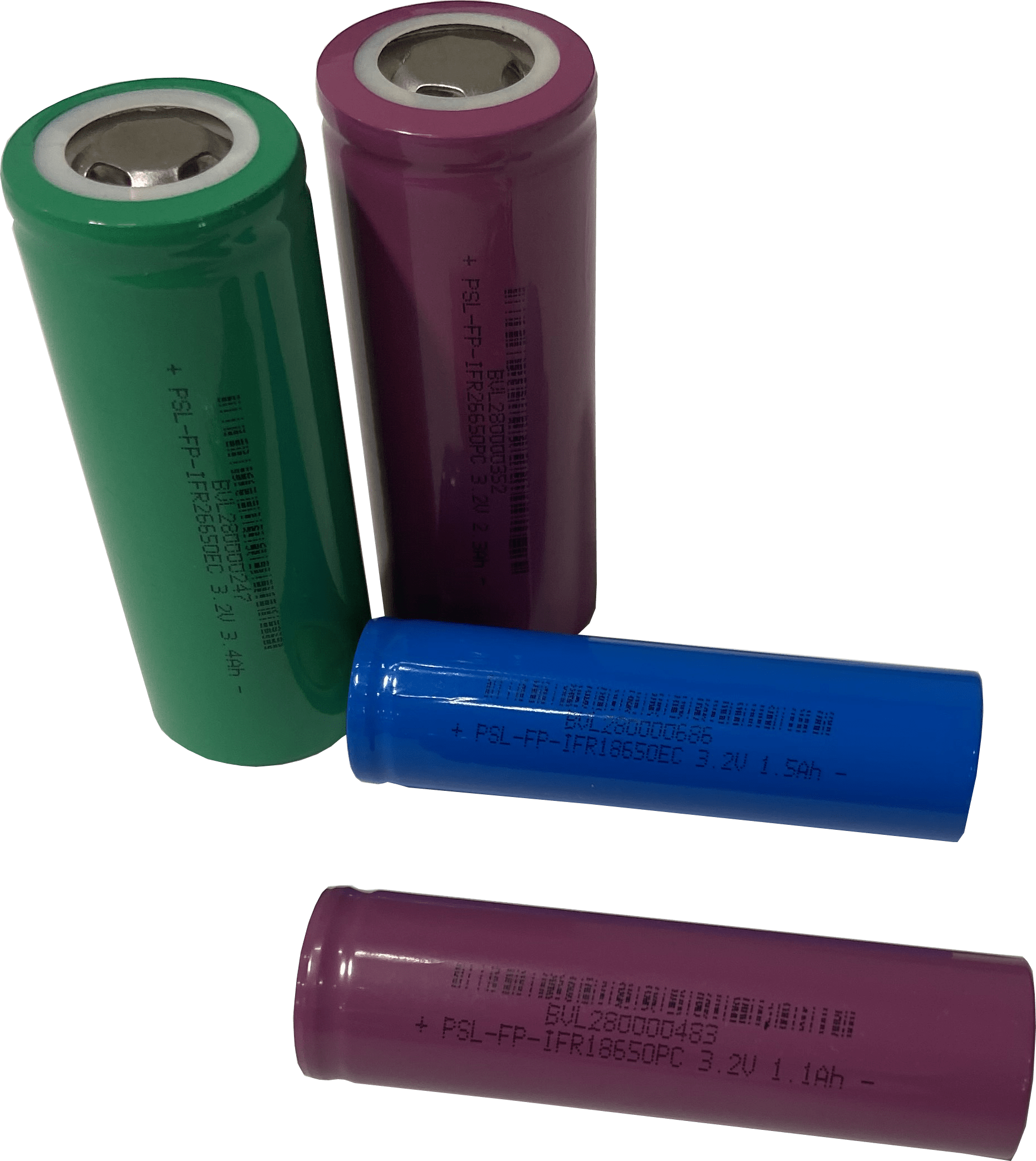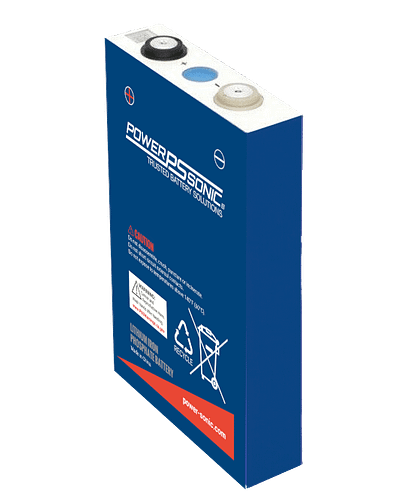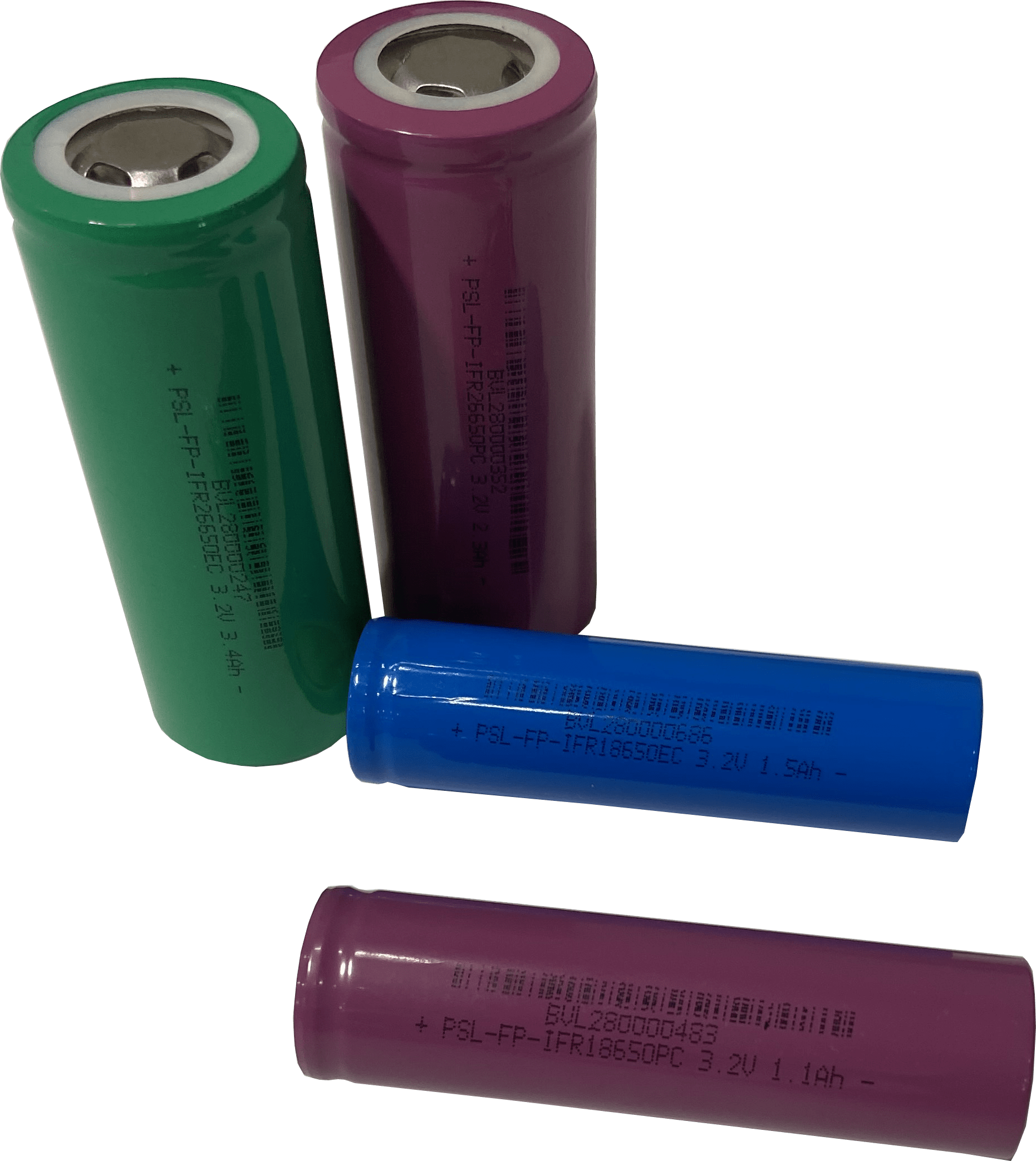A secondary lithium battery performs similarly to other primary batteries and their various chemistries in that it powers other devices (this is called discharging), but then can be charged so you can use it again. If you are looking for a full breakdown of the differences between SLA (sealed lead acid) and Lithium batteries, you can read about it here. This blog will delve deeper into lithium cells, their configurations, what they mean in practical applications, and how the construction of a lithium battery better aligns it to perform for specific applications.
LITHIUM CELL FORM FACTOR
When you take off the top of a lithium battery pack, you’ll first notice the individual cells and a circuit board of some kind. There are three types of cells that are used in lithium batteries: cylindrical, prismatic, and pouch cells. For the purpose of this blog, all cells are lithium iron phosphate (LiFePO4) and 3.2 volts (V).
CYLINDRICAL LITHIUM CELLS
A cylindrical cell looks most like what you think of with a traditional household battery – like a AA battery – and that is exactly where this form factor drew it’s inspiration for shape when they first came to market in the mid-1990s. Cylindrical lithium cells come in different widths and lengths, varying amp-hours and as energy or power cells. These types of cells can be used for large and small battery packs of varying capacities and voltages. However, cylindrical cells are most ideal for applications like smaller Ah batteries, power tools, drones, children’s toys, and medical equipment where space is limited and weight is a factor in overall performance.

PRISMATIC LITHIUM CELLS
If you think about the size of the compartments where batteries go, you’ll find most of them to be square in shape. This is where the prismatic form factor comes from. A prismatic cell is what you will find inside your laptop – it offers a larger capacity in a small foot print, and is rectangular in shape. Also available in power and energy cells, these types of cells can be used in batteries designed to meet sealed lead acid battery dimensions. While dimensionally larger than a cylindrical cell, prismatic cells pack more amp-hours per cell by having more lithium by volume, allowing for larger battery pack configurations and single-cell options. For this reason they are commonly used to build larger battery packs and are a top-choice for batteries used in energy storage devices.

LITHIUM POUCH CELLS
The non-power sport lithium products Power Sonic provide feature either a prismatic or cylindrical cell. However, our Hyper Sport Pro line of power sport batteries feature a pouch cell. A pouch cell is just what is sounds like, an aluminum foil pouch which houses a lithium iron phosphate polymer chemistry, with two terminal tabs coming out of one end. This cell form factor allows for the most lithium by volume and is designed to be directly placed into it’s application without a cell case. With the use of lithium polymer (powder), pouch cells can pack more power density in than other types of cells due to their construction and size.

TYPES OF LITHIUM CELLS
In addition to the lithium cell form factor, you will also need to decide if you need a lithium power cell or a lithium energy cell. A power cell is, you guessed it, designed to deliver high power. Likewise, an energy cell is designed to deliver high energy. But what exactly does that mean and how are lithium power cells and energy cells different?
WHAT IS THE DIFFERENCE BETWEEN A POWER CELL AND AN ENERGY CELL?
First, we should note that all types of cells cycle – it just varies to how deeply and how quickly (See battery C ratings). Power cells are design to deliver high current loads over a short period of time at intermittent intervals, making them ideal for use in high rate and starter applications or power tools which generate high loads/torques. Energy cells are designed to deliver sustained, continuous current over a long period of time, making them ideal for use in motive cyclic applications like scooters, e-bikes, etc.. All lithium cells are good for cyclic applications – even power cells – but as noted above, the length of the cycle varies. For example, in a power tool the user expects the tool to run for a total of an hour or so before charging, but a scooter user would not be happy if their scooter died after one hour of use.
HOW TO CONFIGURE A LITHIUM PACK (BATTERY)
When building a lithium battery, once you have selected the type of cell you’ll be using, you will need to decide the amp-hours and voltage needed for your application. When building a pack, you’ll also need to decide the amperage required for your application.
For example, if you are using a 25 amp-hour (AH) 3.2 V prismatic cell to build a 125 AH 12.8 V battery, you will need a battery pack built in a 4S5P configuration. This means the cells need to be arranged in 4 master packs of 5 cells in parallel (5P), and the 4 master packs are placed in series (4S) for a total of 20 cells. The parallel connection is to increase the amp-hour capacity, and the series connection is to increase the voltage. Learn how to connect batteries in series or parallel.
The reason for different form factors of lithium cells is two-fold. One reason is because you need different sizes, shapes, and flexibility levels depending on the battery you are building. The other reason is that you may need flexibility in the capacity and voltage of your battery, and may find that building a 24 amp hour battery with many cylindrical cells better fits your need than building a battery with a fewer prismatic cells (and vice-versa).

Additionally, as noted above, the type of application needs to be considered. For example, while you could use lithium energy cells to build a starter battery, it would be wiser to use power cells as they will provide more power in this application than an energy cell would. Just like with a lead acid battery, a lithium battery won’t last as long if you don’t use if for the intended application – cyclic, starter, or high rate.
In the PSL-FP line of lithium cells, you will see that we offer both power and energy cells. This is to allow customization of your battery pack to fit your higher capacity, high rate, or deep cycle application needs. We also offer prismatic and cylindrical cells, to allow for further customization of your pack.
As you can see, there are many things to take into consideration when building a lithium battery. From the application it is intended for, to physical size restrictions, down to the voltage and amp hour requirements, understanding the lithium configuration options before you build a battery pack will help you build a better battery. If you have any questions on this topic, please feel free to contact us.







